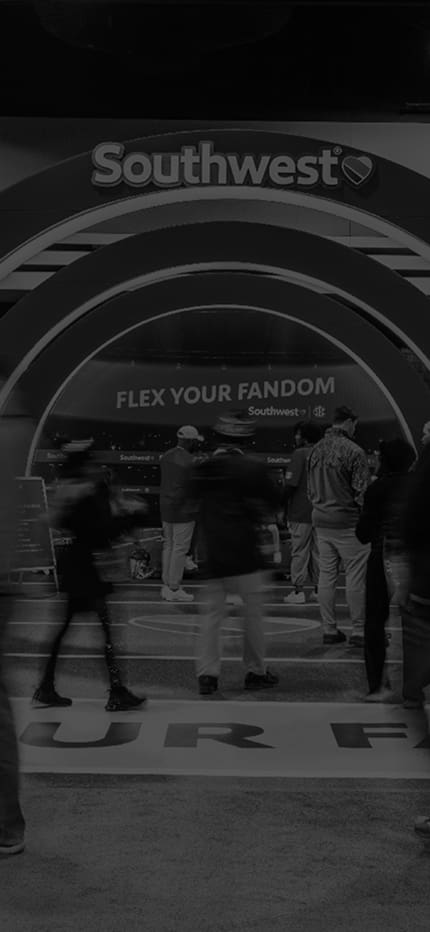Let me start by saying that becoming a copywriter was never even in the realm of possibilities until midway through college. In fact, throughout elementary and high school, the most consistent feedback on my essays was to elaborate or continue my thoughts. Achieving the minimum requirement for a class essay was as much line spacing and font size as it was the written content.
Fast forward to now – art directors just keep telling me to write less. But, in hindsight, the years of dreaded English and literature classes might have made an impact.
If you’re thinking to yourself, writing an essay and coming up with creative copy for marketing are completely different skills. You’d be right. But, I felt the anecdote was relevant and a more personal way to start. The fact is, copywriting, like I suppose most other skills, is developed over years of experience. I’ve picked up a lot of tools and resources along the way from mentors that I try to implement in my work.
But for the purpose of this blog, I’ve outlined five immediate ways anyone can improve their writing. There are certainly others, but these are the handful I’ve chosen that I rely on to do my best work.
Sound good? Let’s dive right in.
1. Use Personal Insights.
Writing compelling copy is half the technical ability to communicate your thoughts clearly, half developing the thoughts to begin with. The process of concepting in creative advertising is essential to solving business problems for clients. But sometimes, researching whether through collaboration with the strategy team or just simple internet searches can only get you so far. It’s important to pull from your own experiences.
- What do you think about the subject?
- How do you feel something impacts people’s emotions?
- Why is what you’re trying to communicate going to be culturally relevant?
What you arrive at may not always be universally accepted, but it does give you a perspective. And, that’s a great place to start.
2. Breaking Rocks.
“Breaking Rocks” is a skill that was taught to me by a mentor during my final internship, and one I still use every day. It’s a great tool to avoid writer’s block and to discover other ways of expressing a similar idea.
What happens so often is I go down a path of thought and develop ideas/lines intended to solve a singular problem. And usually, once I’ve found a nugget of inspiration, I write it down and force that idea. But sometimes, as a writer, it’s easy to get stuck on that train of thought. So the simple way to spark additional directions is to “break the rocks.”
- Switch out a word with a synonym.
- Write it in reverse.
- Flip it to be negative, or positive.
- Make it a question.
- Then answer it.
- Write it formally, or casually.
Really anything you can do to alter the line, even slightly, can serve as the catalyst for a new, interesting direction.
3. Use Literary Devices
A literary device can be a great tool. But, and there is a but! Don’t rely on them. For anyone who is wondering what I mean by literary devices, it’s not Thesaurus.com. Although that almost made this list.
Literary devices can be metaphors, personifications, rhyming, similes, idioms, etc. My personal favorite, which is sometimes my downfall (but they simply call to me), are alliterations.

Literary devices can help create relevance, provide additional context, define things in a creative manner, or simply make your copy more fun to read or listen to. However, like the beginning of this paragraph alludes to, don’t rely on them. Using literary devices is a phenomenal way to add personality to your copy, but make sure you’re still communicating what’s most important. If the words lose significance in favor of style, then it’s a good idea to rethink what you’re saying.
4. Build Your Creative Vocabulary
This somewhat enhances the previous tip, but is important to consider nonetheless. Paying close attention to what is being written is obviously a necessity in creative copy. But, it’s just as much how you say it, as what it is being said.
While it’s often required to use brand-specific vocabulary liberally, it can become monotonous. Reading the same word to describe or mention something over, and over, and over again can cause a reader to lose interest, or can even cause the writing to lose some credibility. Learning to build an expanded vocabulary through reading, research, or even just listening helps create authority in your writing.
Use a synonym, describe it another way, swap out a pronoun for a specific descriptive noun. The idea here is to mix it up — if the goal is retention of the information, then incentivize the audience to pay attention.
5. Follow the Rules (sometimes)
I’m sure there are English enthusiasts that would skewer me for suggesting such an abomination as I’m about to. But the fact is, advertising copy is not an analytical essay requiring MLA citation, and it shouldn’t be treated that way.
That said in most cases, grammar and punctuation rules should be adhered to. But, no one wants to read the previous sentence as “to which grammar and punctuation rules should be adhered.”
I feel as though writing has loosened its grip on the rule book.
The act of writing with a more conversational tone has become more accepted with the widespread adoption of social media, memes, and slang. People want to read something the way they talk, and are willing to let go of literary norms established over 130 years ago.
Of course, if your sentence needs commas to break up a clause, by all means use them. But, you should feel confident bending the rules of grammar a bit, like adding a comma somewhere to initiate a pause or for pacing.
Key Takeaways
In conclusion, (everyone’s go-to 5th grade conclusion paragraph opener…don’t lie, you used it) it’s paramount to remember that these are personal examples of tricks and tips to use in writing. The case may be that you wholeheartedly disagree with something I’ve suggested here. And that’s okay, copywriting is an art, not a science.
If I can leave you with one universal thought, it is this. Think to yourself, “Is this something that I would want to read?” If not, write it again.













